Abstract
Density-gradient centrifugation of disintegrated cells from a variety of plants gave two kinds of chlorophyll particles from all except the blue-green algae. As in previous procedures using detergents, the lighter Fraction 1 particles usually had greater absorption at longer wavelengths; they always had a lower ratio of short to long wavelength fluorescence at low temperature, and a lower fluorescence yield per chlorophyll than the denser Fraction 2 particles. Although only one kind of particle fraction was found in each blue-green alga, the fine structure of the chlorophyll a absorption band differed significantly among the three species measured.
Full text
PDF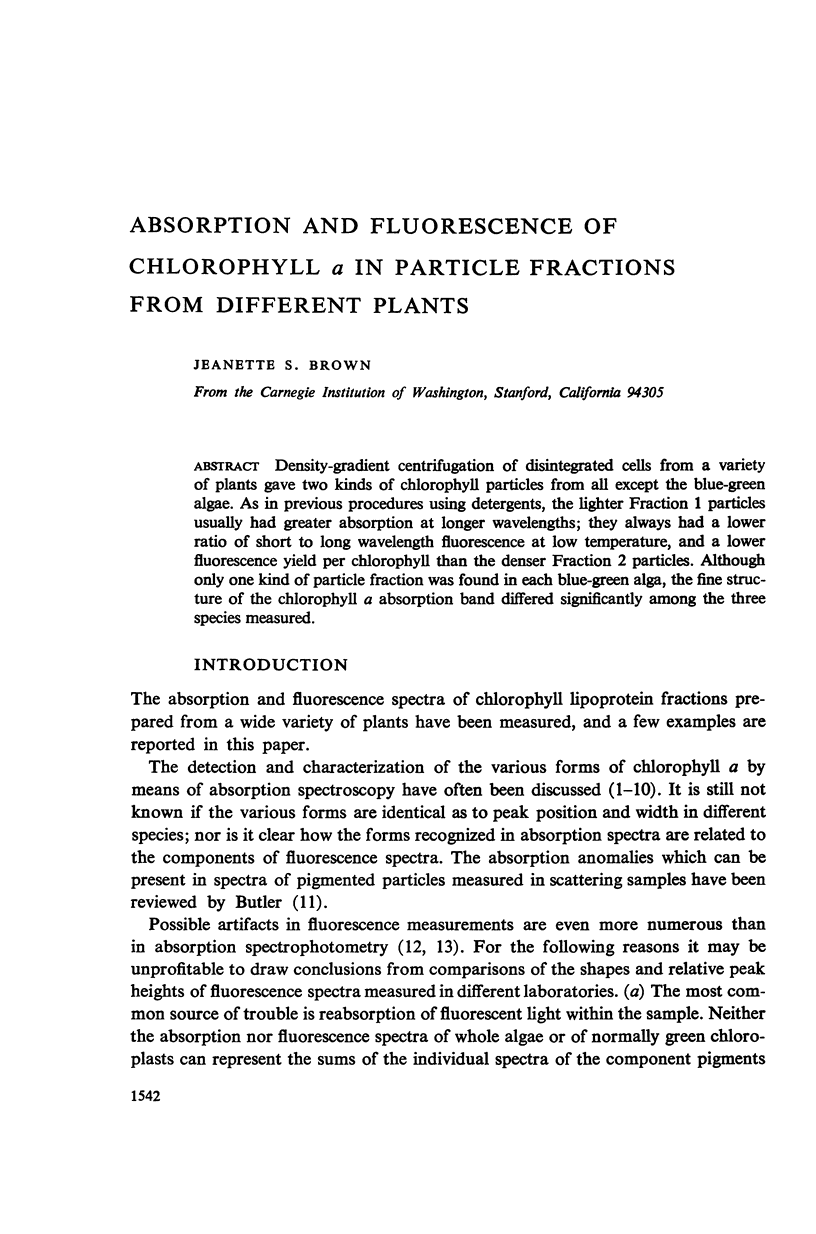
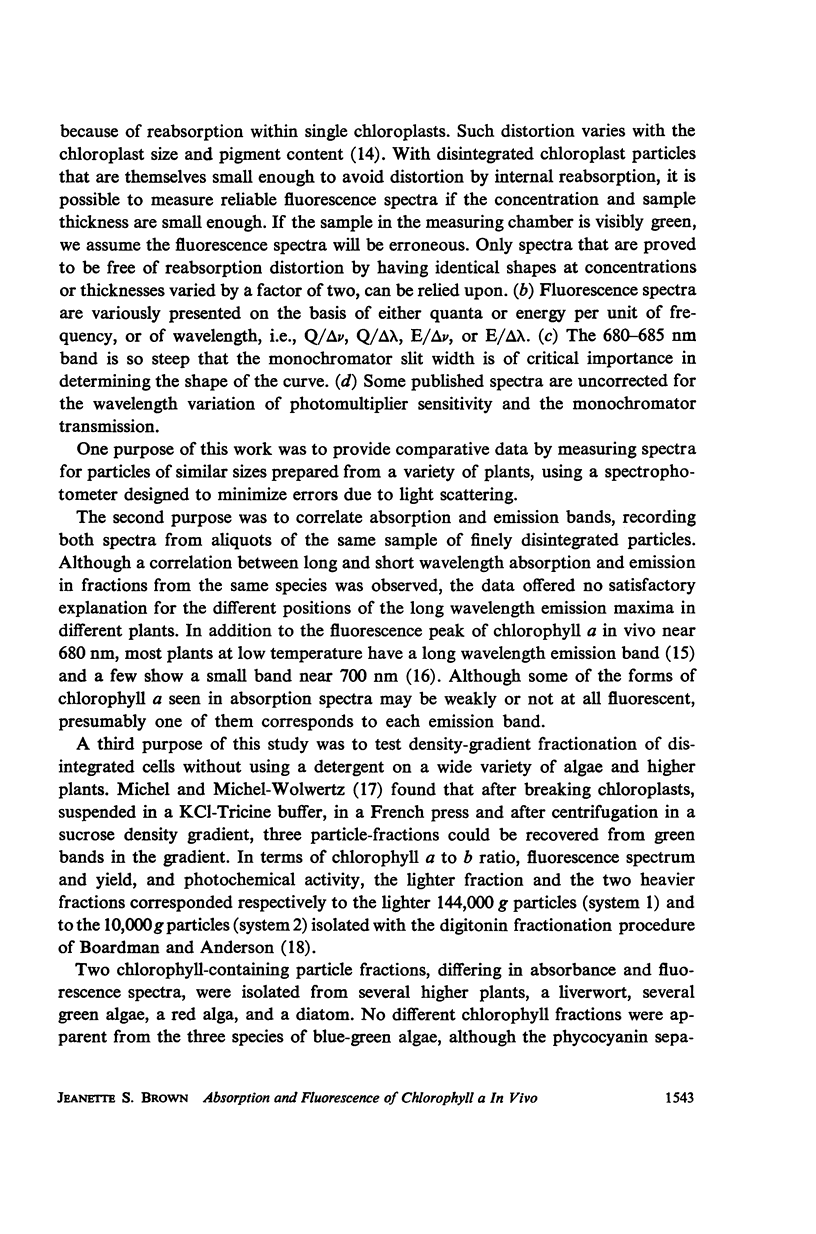
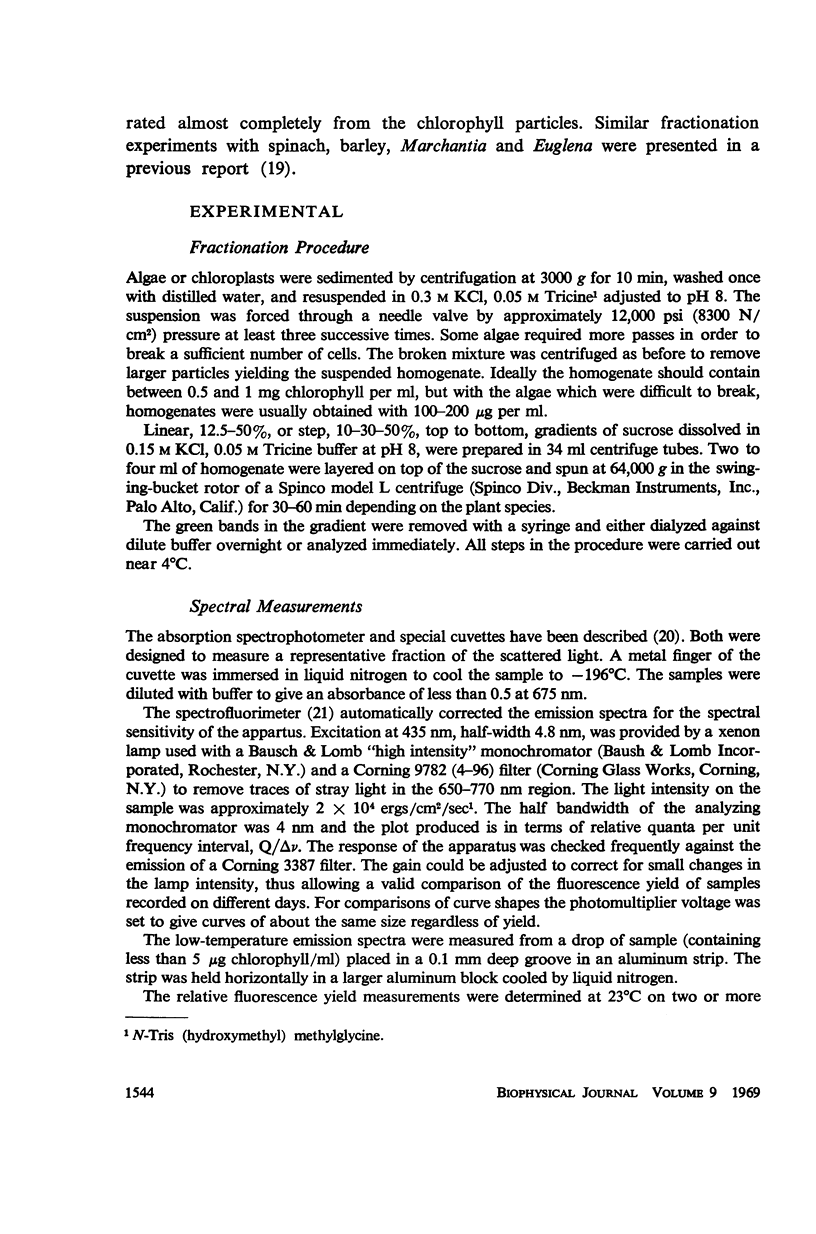
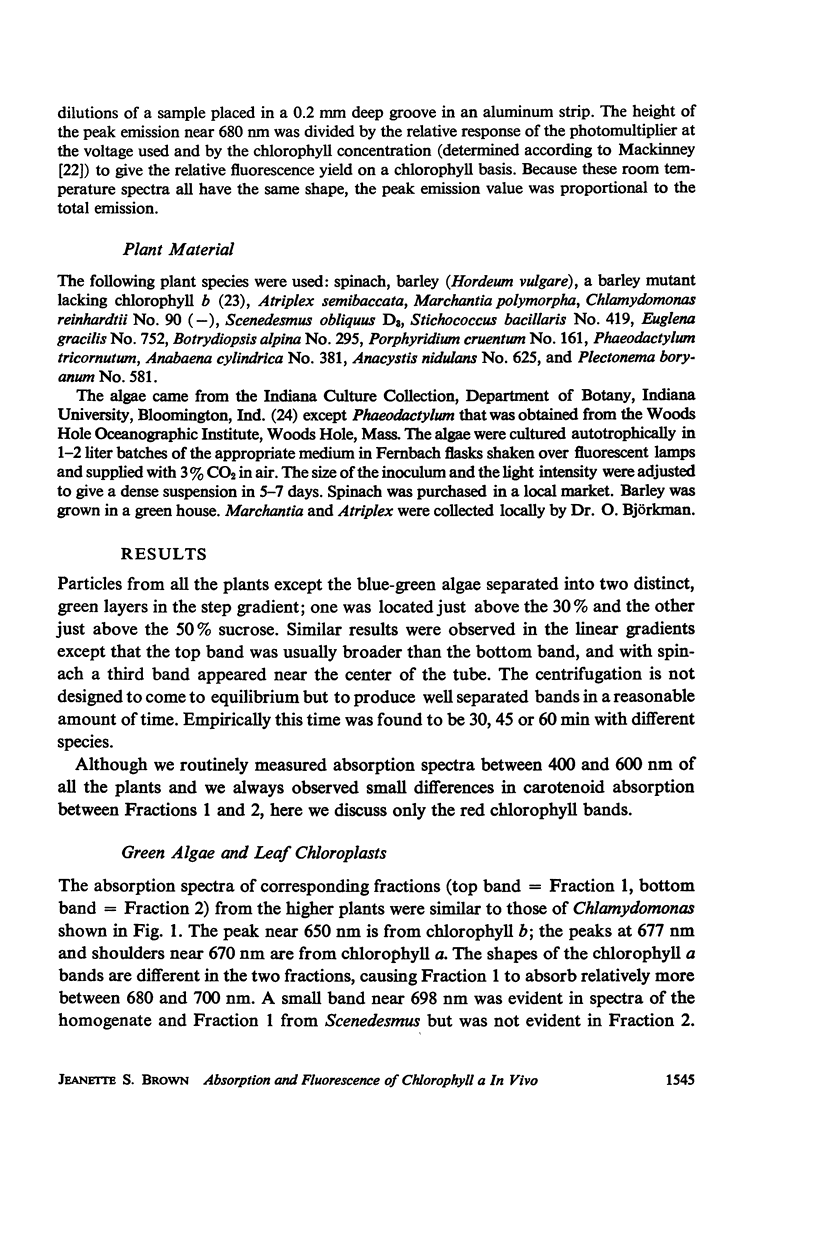
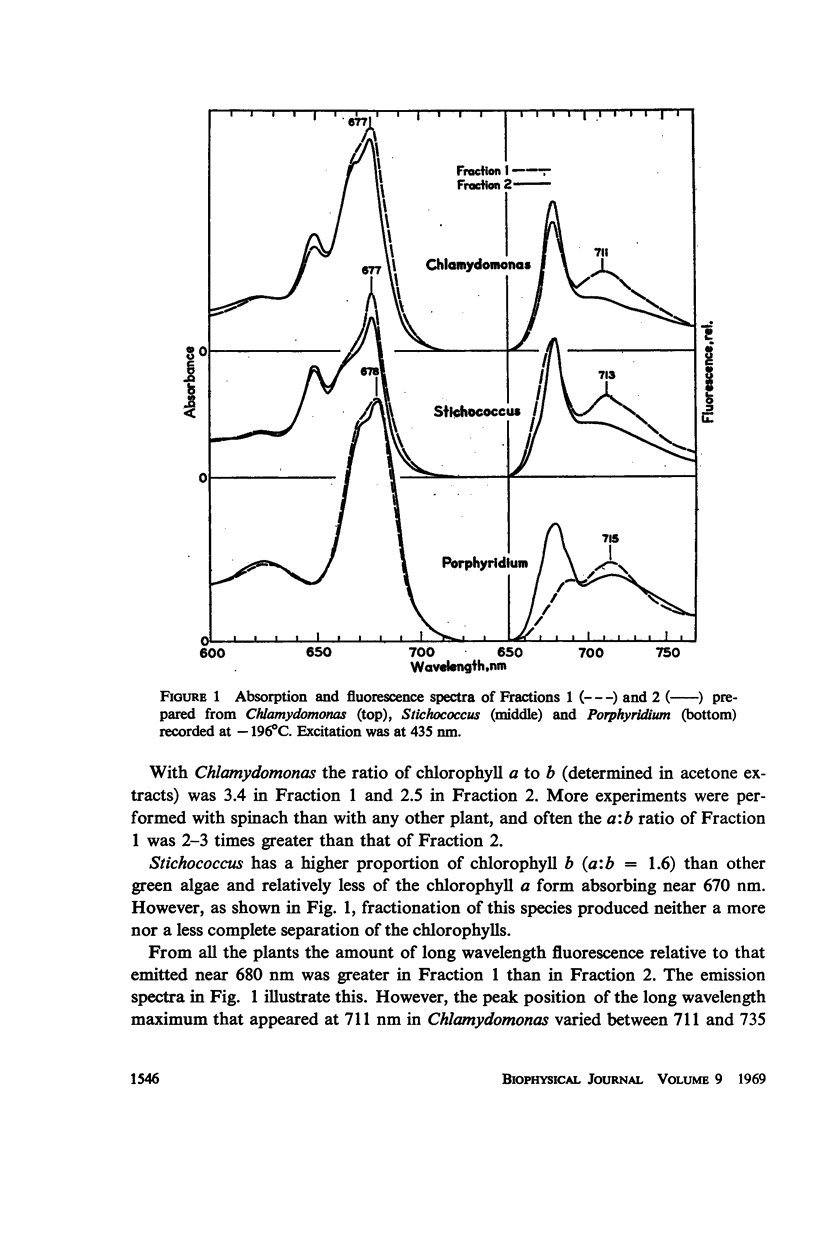
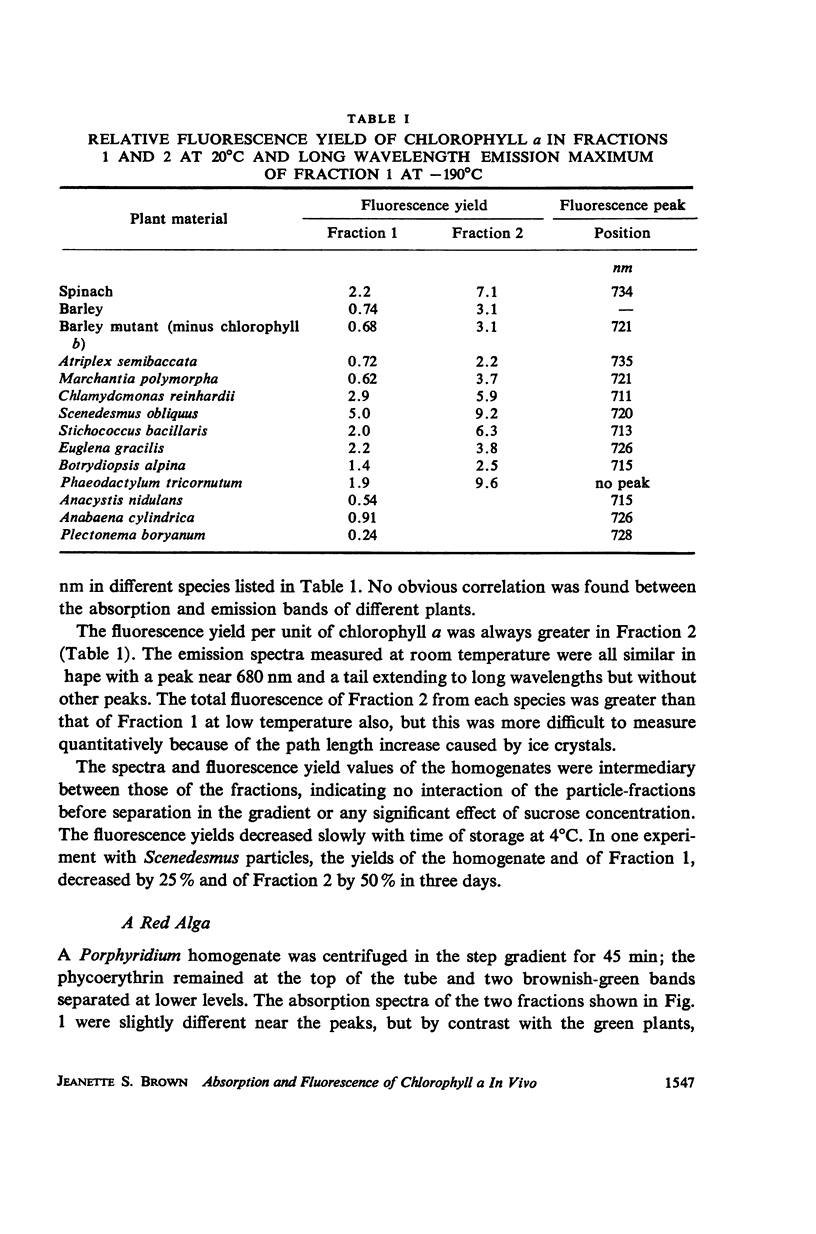

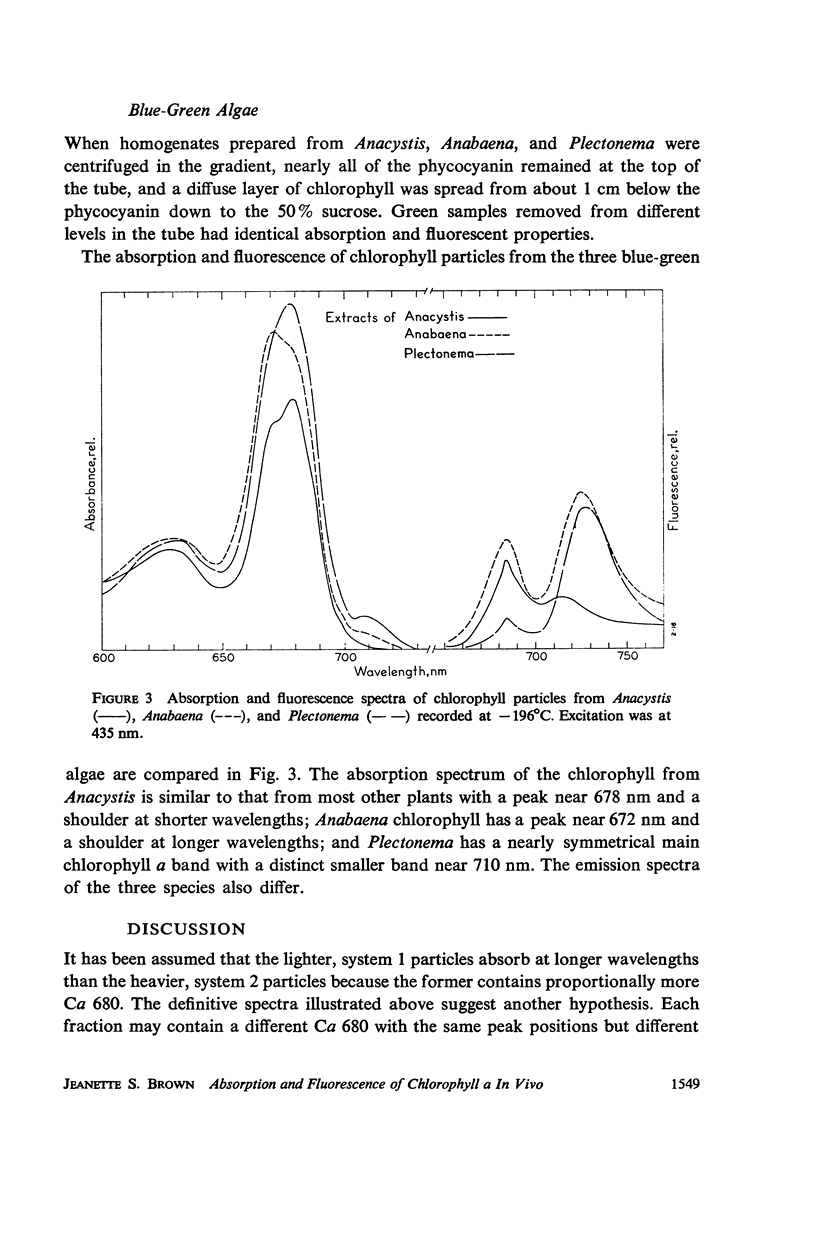
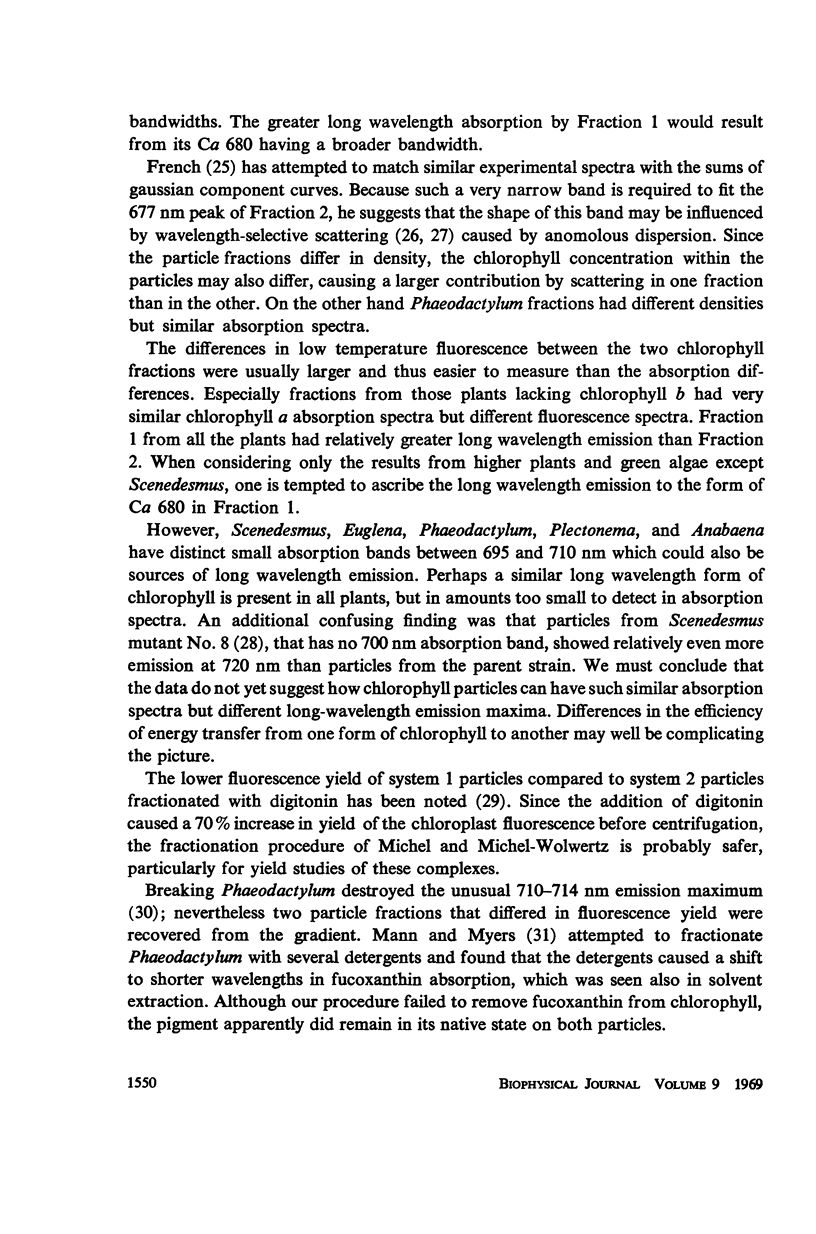
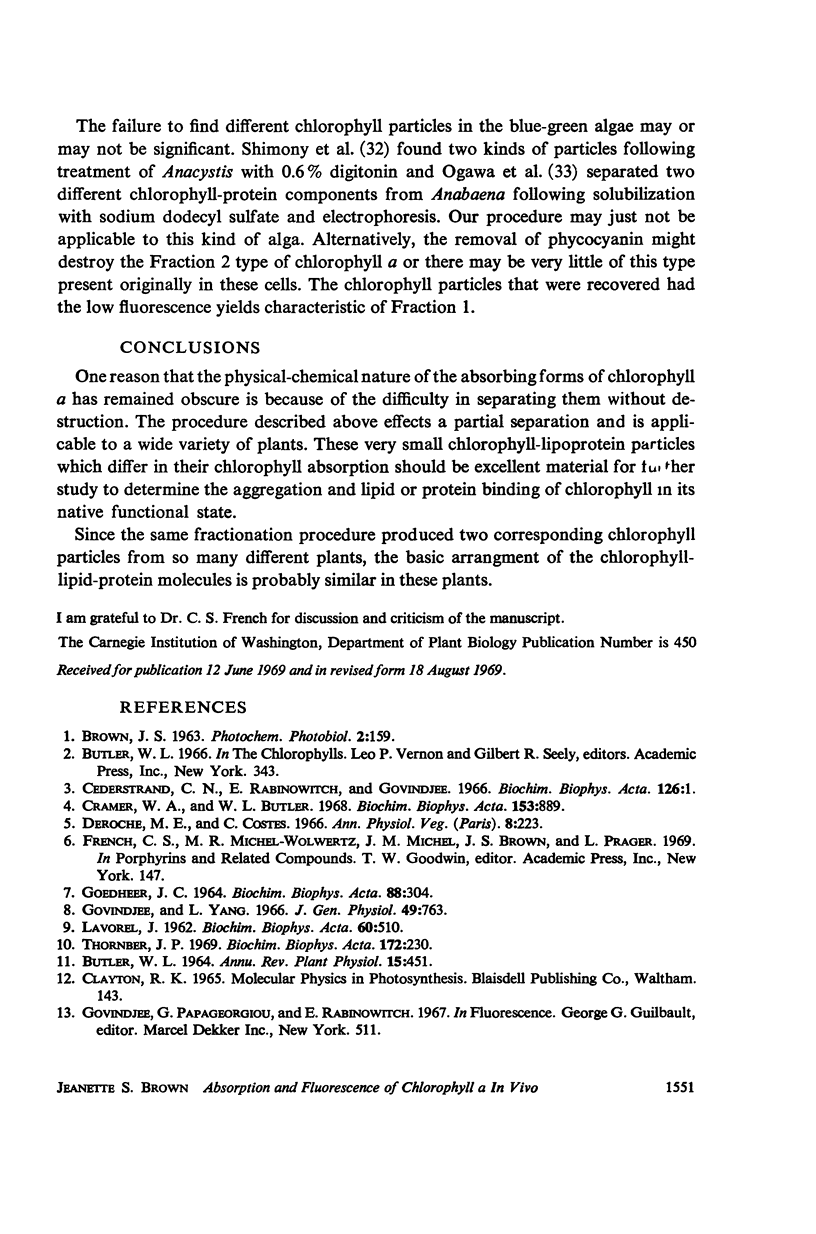
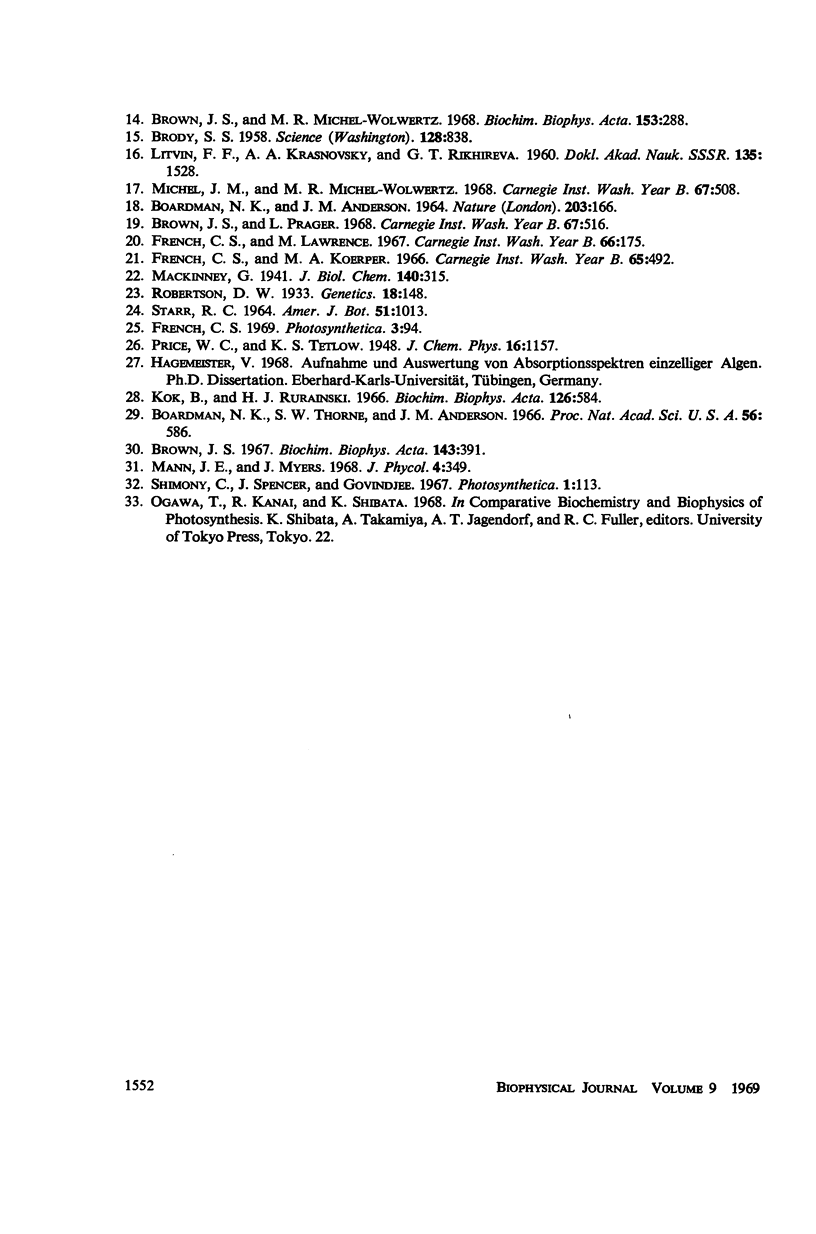
Selected References
These references are in PubMed. This may not be the complete list of references from this article.
- Boardman N. K., Thorne S. W., Anderson J. M. Fluorescence properties of particles obtained by digitonin fragmentation of spinach chloroplasts. Proc Natl Acad Sci U S A. 1966 Aug;56(2):586–593. doi: 10.1073/pnas.56.2.586. [DOI] [PMC free article] [PubMed] [Google Scholar]
- Brody S. S. New Excited State of Chlorophyll. Science. 1958 Oct 10;128(3328):838–839. doi: 10.1126/science.128.3328.838. [DOI] [PubMed] [Google Scholar]
- Brown J. S. Fluorometric evidence for the participation of chlorophyll a-695 in system 2 of photosynthesis. Biochim Biophys Acta. 1967 Sep 6;143(2):391–398. doi: 10.1016/0005-2728(67)90092-8. [DOI] [PubMed] [Google Scholar]
- Brown J. S., Michel-Wolwertz M. R. Chlorophyll fluorescence near 720 millimicrons in Euglena extracts. Biochim Biophys Acta. 1968 Jan 15;153(1):288–290. doi: 10.1016/0005-2728(68)90171-0. [DOI] [PubMed] [Google Scholar]
- Cramer W. A., Butler W. L. Further resolution of chlorophyll pigments in photosystems 1 and 2 of spinach chloroplasts by low-temperature derivative spectroscopy. Biochim Biophys Acta. 1968 May 28;153(4):889–891. doi: 10.1016/0005-2728(68)90016-9. [DOI] [PubMed] [Google Scholar]
- GOEDHEER J. C. FLUORESCENCE BANDS AND CHLOROPHYLL A FORMS. Biochim Biophys Acta. 1964 Sep 25;88:304–317. doi: 10.1016/0926-6577(64)90186-x. [DOI] [PubMed] [Google Scholar]
- Govindjee, Yang L. Structure of the red fluorescence band in chloroplasts. J Gen Physiol. 1966 Mar;49(4):763–780. doi: 10.1085/jgp.49.4.763. [DOI] [PMC free article] [PubMed] [Google Scholar]
- Kok B., Rurainski H. J. Long-wave absorption and emission bands in chloroplast fragments. Biochim Biophys Acta. 1966 Nov 8;126(3):584–587. doi: 10.1016/0926-6585(66)90017-3. [DOI] [PubMed] [Google Scholar]
- LAVOREL J. [Heterogeneity of chlorophyll in vivo. I. Spectra of fluorescence emission]. Biochim Biophys Acta. 1962 Jul 16;60:510–523. doi: 10.1016/0006-3002(62)90870-3. [DOI] [PubMed] [Google Scholar]
- Robertson D W. Inheritance in Barley. Genetics. 1933 Mar;18(2):148–158. doi: 10.1093/genetics/18.2.148. [DOI] [PMC free article] [PubMed] [Google Scholar]
- Thornber J. P. Comparison of a chlorophyll a- protein complex isolated from a blue-green alga with chlorophyll-protein complexes obtained from green bacteria and higher plants. Biochim Biophys Acta. 1969 Feb 25;172(2):230–241. doi: 10.1016/0005-2728(69)90066-8. [DOI] [PubMed] [Google Scholar]


